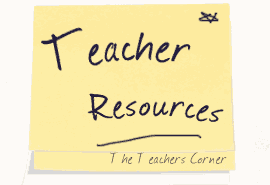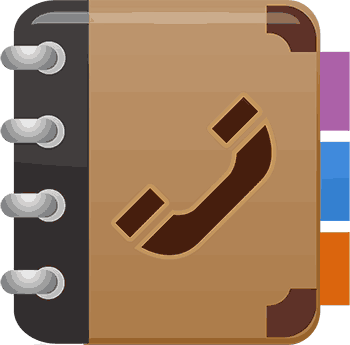 The Teacher's Corner
The Teacher's Corner
Communication
 Communication
Communication
![]() Managing Electronic Communications
Managing Electronic Communications
We all know that our email can often get the best of us, so here are a few tips to help you keep your sanity.
Create labels and/or folders in your email platform. There are always emails that you must keep and are unable to delete. Doing this will allow you to keep these emails organized and easy to find, without having to search through your inbox. Google even allows you to make folders inside of folders!
- Create groups within your contact list. I work with all the different grade levels in my building so I have created a group for each grade level. This allows me to simply type the name of the group when sending an email versus entering individual email addresses. Creating a group containing your parents’ email address at the beginning of the year is also very helpful. One thing to remember about these types of groups is that everyone can see everyone else’s email address. (See the next BCC tip to avoid this.)
- Use BCC (Blind Carbon Copy) for group emails. As mentioned above, sending a group email allows all recipients to see individual email address. To avoid this, put yourself as the recipient of the email and then put the parent email addresses in the BCC field.
- Use “Stars”. My school district uses Google. Within Gmail you are able to go into Settings and customize various features that will help you keep everything organized. On of my favorite features are the “Stars”. These allow you “star” emails with various icons. One that I use frequently is the “!”. If I get an email that needs to be addressed that day, or within 24 hours, I mark it with that star. After taking care of that email’s contents I “unstar” it. When I’m making my last daily check of email, I make sure that I have no “!” stars. Create a system that works well for you.
- Create a signature. I have created a signature in both my personal and school email. This is nice because it allows other people to know a little bit about you. I recommend putting your position and school in your signature. Some teachers also include the following: endorsements, links to classroom social media accounts, and quotations.
- Avoid “Reply All”! This is probably one of my biggest pet peeves. When a coworker shares a photo of their new baby, it’s okay to simply reply back to them...the entire staff doesn’t need to see your response. If your response isn’t critical to everyone else, don’t use “reply all”! It is also important to be very vigilant about “reply all” when dealing with parent emails. You want to ensure that only the necessary people are included when you reply.
No matter how you organize your email and contacts, be sure to always think before you hit send. Remember that tone of voice can not be interpreted in an email. Even though a parent may have reached out to you via email, there are certain situations that are still dealt with better over the phone or in person.
![]() Personal Invitations Grades Any
Personal Invitations Grades Any
Add a personal touch to your Parent-Teacher Conferences."I help parents connect with their child's school experience by purchasing a pack of postcards that are blank with the exception of the postage on the front. I have my students fill out their parents' names and addresses and the school's return address on the front. I send the postcards out with a handwritten personal invitation to parent/teacher conferences on the back.
The notes are personal and send a very positive message to parents that their child and their participation in their child's education are important to me. High school conferences are sparsely attended at our school. These postcards work at getting parents to visit the classroom."
Submitted by: Leahn Agnew, a tenth grade English teacher at Lebanon High School in Lebanon, Pennsylvania. This tip was published in the NEA's Weekly Tip Newsletter.
![]() Tracking Parent Communication
Tracking Parent Communication
 We all know that we are much more than just teachers. We are also secretaries to our own classroom. Having routines in place regarding parent communication is important. When you communicate with parents via email it’s easy to have a record of what was discussed, the date, the time, etc. When it comes to phone conversations, those can be a little tricky. I used a carbonless message notebook to record any voice messages or phone calls that I had with parents. I could then take the top paper and place it in the file of an individual student. (I always have a folder for each student. I could keep parent communication as well as other confidential information within this folder.) Having the carbon copy still in one location allowed me to quickly and easily access my conversations. There were times that I chose to print emails and place that copy of communication in a student’s folder as well. I didn’t want to risk it being lost or deleted.
We all know that we are much more than just teachers. We are also secretaries to our own classroom. Having routines in place regarding parent communication is important. When you communicate with parents via email it’s easy to have a record of what was discussed, the date, the time, etc. When it comes to phone conversations, those can be a little tricky. I used a carbonless message notebook to record any voice messages or phone calls that I had with parents. I could then take the top paper and place it in the file of an individual student. (I always have a folder for each student. I could keep parent communication as well as other confidential information within this folder.) Having the carbon copy still in one location allowed me to quickly and easily access my conversations. There were times that I chose to print emails and place that copy of communication in a student’s folder as well. I didn’t want to risk it being lost or deleted.